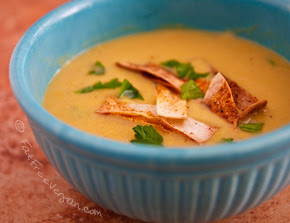Reap the Benefits:
> good source of vitamin C
> good source of manganese
> rich with phytonutrients (different varieties of corn highlight different combinations of antioxidant phytonutrients.
> good fiber content
> provides B vitamins
> notable protein content (5-6g per cup)
> blood sugar benefits
**Numerous studies have examined the ability of corn to improve overall nourishment, especially when combined with other legumes. Cornmeal has been shown to help improve overall nutrient status.
WHFoods
Corn: A History
Corn was domesticated by indigenous peoples in Mesoamerica in prehistoric times. The Olmec and Mayans cultivated it in numerous varieties throughout central and southern Mexico. Between 1700 and 1250 BCE, the crop spread through much of the Americas. After Europeans made contact with the Americas, explorers and traders brought back maize and introduced it to other countries. It grew to be a very popular crop, because of its ability to grow in many different types of climates. The stuff we eat is called sweet corn. Field corn varieties are used for animal feed and chemical feedstocks.
WHFoods
Eat Up!
 |
| Raw Corn Cakes by WhattheHellDoesaVeganEatAnyway |
 |
| Corn Quinoa Salad by VegetarianTimes |
 |
| Triple Corn Soup by FatFreeVegan |
 |
| Raw Bean&Corn Salad with Avocado by FatFreeVegan |
 |
| Pumpkin&Roasted Corn Soup by FatFreeVegan |
 |
| Zesty Lime Corn Salad by HealthyBlenderRecipes |
 |
| Sweet&Spicy Corn Chowder by HappyHealthyLife |
 |
| Corn Cake Bean Balls AKA Amazeballs! by HappyHealthyLife |
 |
| Vegan Bell Pepper Corn Soup by DinosaurDishes |


No comments:
Post a Comment